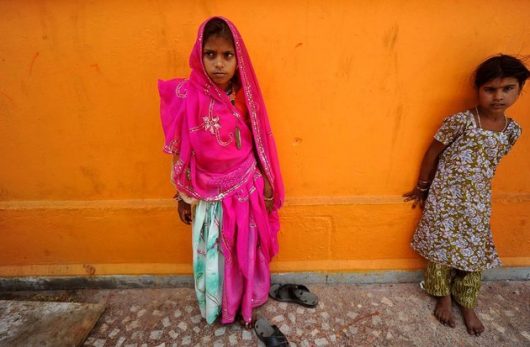Preventing Child Marriage Requires Addressing Poverty

Young girls are most vulnerable and susceptible to child marriage after a natural disaster or political crisis strikes. Aid agencies are often quick to respond with essential resources such as shelter, food and water. However, improvements have yet to be made regarding the provision of services for preventing child marriage.
According to UNICEF, 14.2 million girls are forced to wed before they turn 18. Between 2011 and 2020, more than 140 million girls will become child brides, stated a report by United Nations Population Fund (UNFPA).
“Child marriage is an appalling violation of human rights and robs girls of their education, health and long-term prospects,” said Babatunde Osotimehin, M.D, Executive Director of UNFPA. “A girl who is married as a child is one whose potential will not be fulfilled. Since many parents and communities also want the very best for their daughters, we must work together and end child marriage.”
Families that struggle with the challenges left behind by natural disasters are more likely to allow their children to be married off in the wake of a crisis. In some cases, parents agree to child marriage because they want to spare their daughters from a life of poverty, according to a report by the Women’s Refugee Commission.
The 10 countries with the highest rates of child marriage are: Niger (75 percent); Chad and Central African Republic (68 percent); Bangladesh (66 Percent); Guinea (63 percent); Mozambique (56 percent); Mali (55 percent); Burkina Faso and South Sudan (52 percent) and Malawi (50 percent).
In 2011, the Women’s Refugee Commission began to evaluate the lives of displaced girls from Uganda, the Congo, Syria and Somalia. The resulting report found that poverty, especially when exacerbated by natural disasters, continues to be one of the main drivers of early marriage, as “parents hope to secure a daughter’s future or to meet basic needs”.
The report identified six solutions for preventing child marriage.
- Provide Adequate Food, Clothing and Shelter: governments and aid agencies must provide families with necessities so that there is no benefit in marrying off their daughters at young ages.
- Prioritize Education: Young brides are more often than not deprived of education. Education is key to breaking the vicious cycle of child marriage. Education can also expose girls to the risks of early pregnancy, childbearing and motherhood before they are physically and psychologically ready.
- Identify Child Brides: It is critical to know how to identify child brides in order to help them. Girl Power, an app headquartered in India, is tackling this problem.
- Involve a Range of Actors: Preventing child marriage requires the assistance of stakeholders that belong to a variety of areas of expertise, as the problem is not just one of education, but also surrounds health care and creating sustainable solutions.
- Understand the Nuances Involved: Advocates must research and learn what drives displaced girls to get married after the passing of a disaster (either natural or political).
- Pilot Intervention Programs: The report calls on activists and leaders to establish programs that can target young girls at risk of child marriage during crises. This involves health programming, community education and economic interventions.
According to their website, the Every Woman Every Child initiative is a movement that mobilizes and intensifies international and national action by governments, multilaterals, the private sector and civil society to address the major health challenges facing women, children and adolescents around the world.
“I urge governments, community and religious leaders, civil society, the private sector and families – especially men and boys – to do their part to let girls be girls, not brides,” said Ban Ki-moon, U.N. Secretary-General, who launched the initiative.
– Michelle Simon
